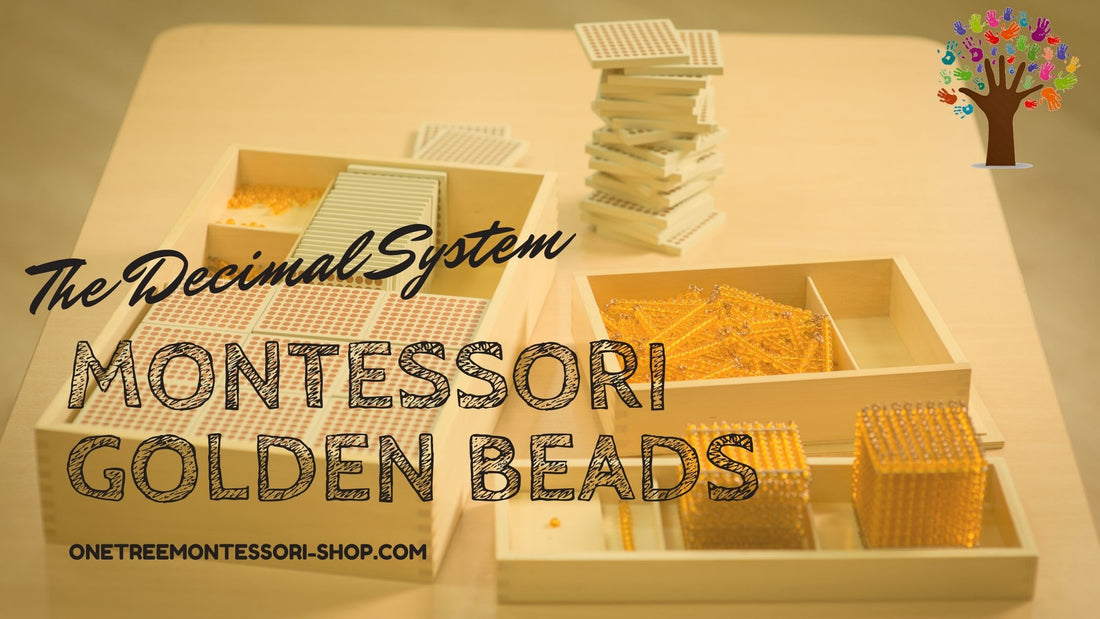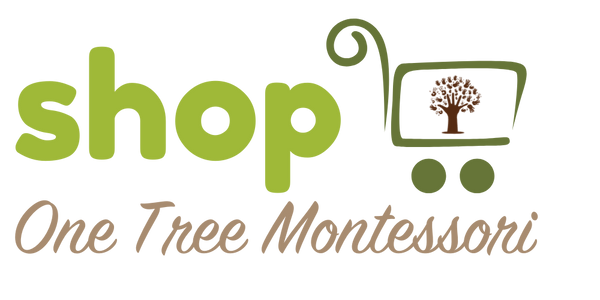
Teaching the Decimal System with Montessori Golden Beads
Share
New teachers and homeschooling families often wonder where to start, what order to introduce which concepts in and how to make the work fun when children find it too much effort.
So, here's a quick overview of teaching the decimal system with the Montessori Golden Beads!
Table of Contents
|
A Sequence of Golden Bead Lessons
|
Place Value & Decimal System Explained
You might have heard the Great Lesson of Numbers, an impressionistic story usually told to children aged 6-12 years. Here's a great version of it from the Meher Montessori School on YouTube.
It gives children some background on the numerical system we use and how it works. To be clear: we use the decimal system with a base of 10. It's not the only system - just think of the way we measure time, or the weird and wonderful units of Fahrenheit, inches or fathoms.
If you're interested, here's a TedEd on the history of numerical systems:
But for this blog, we're going to focus on the decimal system only. A base of 10 means that we change from one unit to the next in steps of 10. Besides simple maths, we use it in a lot of areas of life:
For example, 1 dollar is 100 cents (or ten 10 cents). 1 metre is 100 centimetres (or ten times 10 centimetres). That makes 10 a very special number.
What's even more special is the number 0. It denotes "nothing" but powers the concept of place value. Place value means that a numeral carries a certain value depending on where it stands in the number.
3, for example, just means 3 single things. And in 4389, 3 means three hundred single things. That allows us to work with large numbers easily, but can also be a little confusing for young children because it's a very abstract concept.
This is where the Golden Beads come in.
What are the Golden Beads?
The Golden Beads are a set of materials made by Dr Maria Montessori at the beginning of the 20th century. They're based on the Italian currency at the time and have sets of beads for the basic place values of 1, 10, 100, 1000.

Children use them to conceptualise place value and big numbers. Used correctly, the Golden Beads accompany a child's learning from around 4 years old until they leave lower elementary.
Key Points of Using the Golden Beads
You're Not the Teacher
The material is. You're only showing the child how to use the material. By using it, they learn the concept. Once they've used it extensively, you operationalise the concept by giving them the language to name and describe what they're doing.
Concrete Before Abstract
Concrete: the beads / Abstract: the numerals
Introduce the beads alone first, then introduce the numerals alone, and only use them together when the child knows both really well.
Concrete first because anything that we can physically manipulate is much easier to learn than things we can only look at.
Keep them separate until they're both well learned allows the concepts to be solidly established, which makes drawing connections between them easier.
One New Thing at a Time
It's just easier to learn one new thing than two or three. Even if you skip some steps (see below), you should still make sure to introduce new lessons in smaller pieces if there are multiple skills to learn.
For example, if your child can already make numbers with the golden beads and number cards and they are interested in addition, you would show them how to add the numbers without writing them down yet.
It's Okay to Skip Steps
The Montessori scope & sequence of lessons is a beautiful framework that allows you to see which skills your child needs or is interested in and start them off exactly there.
That also means that sometimes, they already know one thing (maybe reading big numbers) but not another, "previous" skill (like knowing the names of the golden beads). Then it's really okay and even necessary to not reteach what they already know just because it's in the sequence of lessons.
They're Not the Only Material
Depending on a child's previous learning experiences, their mood on that day or even how they slept, sometimes one piece of material just doesn't call to them.
That's okay, and if little modifications to the activity don't "fix" it, leave it and do something else. It's not worth fixating on one piece of equipment. For place value, big numbers, the decimal system and the concept of operations, you can also use the stamp game, the coloured bead stairs, the bead frames, Lego pieces or even toy horses.
Sure, the Montessori equipment was specifically designed to convey a specific concept in the easiest, most learnable way possible - but that doesn't mean your child will always be happy to work with it.
A Brief Sequence of Golden Beads Lessons
These are the key lessons with the golden beads; it's not an exhaustive list. Some schools/websites may use different names for the different lessons.
| Lesson | Main Aim |
| 3-Period Lesson on Golden Beads | Learn the names of the thousands, hundreds, tens and units (beads) |
| Make Me... (Beads) | Strengthen name-object association |
| 9-Tray | Introduce exchanging across hierarchies |
| Handful Exchanging | Practise exchanging across hierarchies |
| 3-Period Lesson on Number Cards | Learn the names of the thousands, hundreds, tens and units (numerals) |
| Make Me... (Cards) | Strengthen name-symbol association |
| 9-Layout |
Show organisational layout of number cards Reinforce that 10 of one hierarchy make 1 of the next |
| 45-Layout |
Associate beads with number cards (object to symbol) Gain an impression of the size difference between 1 unit and 9 thousands |
| Make Me... (Beads & Cards) |
Strengthen object-symbol association |
| Operations |
Addition, multiplication, subtraction, division |

A Special Note About the Make Me... Game
After introducing a concept, there needs to be extensive practice with it, like in the second step of a 3-Period Lesson. The Make Me... or Bank Game serves as exactly that.
How Does It Work?
A teacher or child asks for a number and another child brings that number. If you're working with real golden beads, they normally carry them on a tray - makes it easier.
As you can see in the brief sequence above, the Make Me... Game should be played with the beads only, then the number cards only. Once both concrete object (beads) and abstract symbol (number cards) can be recognised and named without fail in different contexts and configurations, they're introduced together.
Now, there are many varieties to this game - all of which should be used to make sure these associations are rocksolid.
- A teacher or child will build a number with the beads and another child makes it with the number cards;
- A teacher or child will make a number with the cards and another child builds it with the beads;
- A teacher or child will say a number and another child makes it and builds it with both cards and beads;
- The numbers can be written down (colour-coded at first, single-colour later), drawn or stamped to record them.
It's important to make a variety of numbers, from single-digit to four-digit ones, with zeros inside and all.
Some children may need to be shown explicitly how the place value changes, but it's something that can easily be interwoven within all number card work.
Printable Golden Bead Materials

We have printable golden beads and number cards in our freebies library (sign up here if you haven't already).
We also have Make Me Cards for the golden beads and number cards (USD 0.99) in various languages.
Where to Go Next?
Once your child understands place value and the decimal system with the golden beads, you can use them for all operations - it's amazing to see young children solve "big" problems on their own!
I'd love to hear about your experience with the golden beads or give you some tips if you're stuck. Comment on this blog, send me a mail or message me on Instagram!

1 comment
Quisiera tener el material